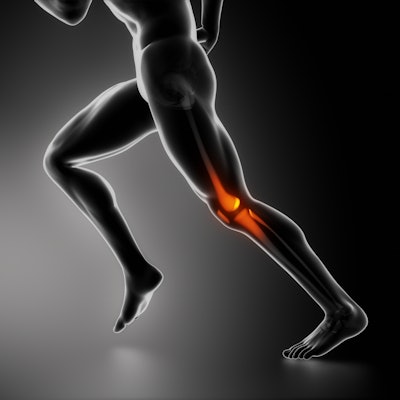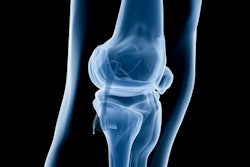
Software based on deep-learning algorithms provided fully automated diagnosis of full-thickness anterior cruciate ligament (ACL) tears on MRI scans at an accuracy level comparable to experienced clinical radiologists, according to research published online May 8 in Radiology: Artificial Intelligence.
Researchers led by Fang Liu, PhD, and Bochen Guan of the University of Wisconsin School of Medicine and Public Health developed an ACL tear detection system based on three deep convolutional neural networks (CNNs). In testing, the algorithm yielded performance comparable to five radiologists when analyzing MRI scans.
"There was no statistically significant difference between the ACL tear detection system and clinical radiologists with varying levels of experience for determining the presence or absence of a full-thickness ACL tear using sagittal proton density-weighted and fat-suppressed T2-weighted fast spin echo images," the authors wrote.
To create their deep learning-based ACL detection system, the researchers first retrospectively gathered MRI datasets from 175 patients with surgically confirmed full-thickness ACL tears and 175 subjects with surgically confirmed intact ACLs. All participants had received arthroscopic knee surgery within four months of their MRI exam.
The team's system utilized three CNNs: the first selected the image sections containing the ACL from the MRI dataset, while the second used these image sections to isolate the region of the intercondylar notch that contains the ACL; the classification CNN then completed the automated processing pipeline by analyzing the selected image sections to determine whether there was a tear.
The researchers trained the system using 100 cases with ACL tears and 100 with intact ACLs. After testing several different classification CNNs, the group selected the most optimal model -- adapted from DenseNet -- after validation on MR images from 25 patients with ACL tears and 25 subjects with intact ACLs. The remaining 50 cases of ACL tears and 50 cases of intact ACLs were utilized as the testing dataset for the final system.
The system's test results were then compared with those of five clinical radiologists: a fellowship-trained musculoskeletal radiologist with 13 years of clinical experience, a musculoskeletal radiology fellow, a second-year radiology resident, a third-year radiology resident, and a fourth-year radiology resident. Blinded to the findings of the arthroscopic surgeries, the radiologists independently reviewed all 100 MRI exams from the testing dataset on their PACS software (Change Healthcare), using all five sequences in the MRI exam.
The researchers found no significant difference in diagnostic performance between the deep-learning algorithm and the radiologists.
| Performance of deep-learning algorithm for detecting ACL tears | ||
| Radiologists (range) | AI | |
| Sensitivity | 96%-98% | 96% |
| Specificity | 90%-98% | 96% |
| Area under the curve | 0.93-0.98 | 0.98 |
The AI algorithm needs more technical development and validation, however, before it can be used in clinical practice, according to the researchers.
"In particular, the diagnostic performance of the ACL tear detection system must be further evaluated in large prospective studies that include subjects with both full-thickness and partial-thickness ACL tears who are evaluated at different institutions using different MRI units and different imaging protocols," the authors wrote.



















